| Friday, June 16
It was hardly a raucous Friday evening in Glasgow Harbour. I curled up in my sleeping bag on Naomi’s floor while listening to Scottish music on the local Antigonish radio station. The forecast of southwesterly winds of 20-30 knots had been a perfect excuse to stay here for another night. During the day, I rambled along the stony foreshore of Glasgow Harbour. On a hilltop overlooking the coast, I sat watching a boisterous white-capped sea running up Chedabucto Bay and into the Straits of Canso. Returning to Naomi a few hours later, I cooked the first meal of the passage which wasn’t out of cans. I spent a delightful afternoon reading, snacking, and dozing under Naomi’s boom tent. The heavy green canvas tent, along with its distinctive smell of waterproofing, reminded me of living in pup tents and bell tents decades ago. Naomi’s jouncey rolling and veering on the light chop which bent up Lennox Passage, dispelled some of the similarity with land camping though. A Wayfarer’s cockpit enclosed in a boom tent is a roomy little home, especially for a solo sailor. |
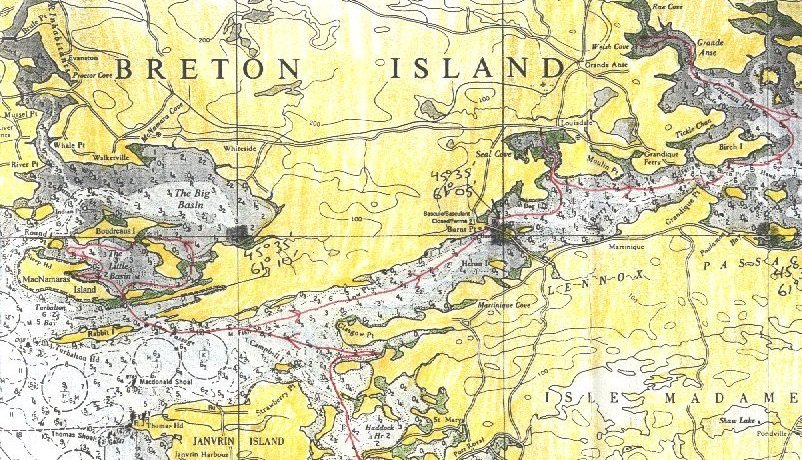 |
| Saturday, June 17
Early Saturday morning I left Glasgow Harbour while the winds were light and sailed across Lennox Passage to River Inhabitants Basin. Inhabitants Bay itself is exposed to southerly winds but The Little Basin and The Big Basin are sheltered waters. The five islands and headland surrounding The Little Bash are all uninhabited and create a peaceful cruising area. After crossing Lennox Passage in a dissipating convection fog, I sailed through Cary Passage and approached Crid Passage. A gravel and stone bar joins the headland to MacNamaras (Evans) Island. |
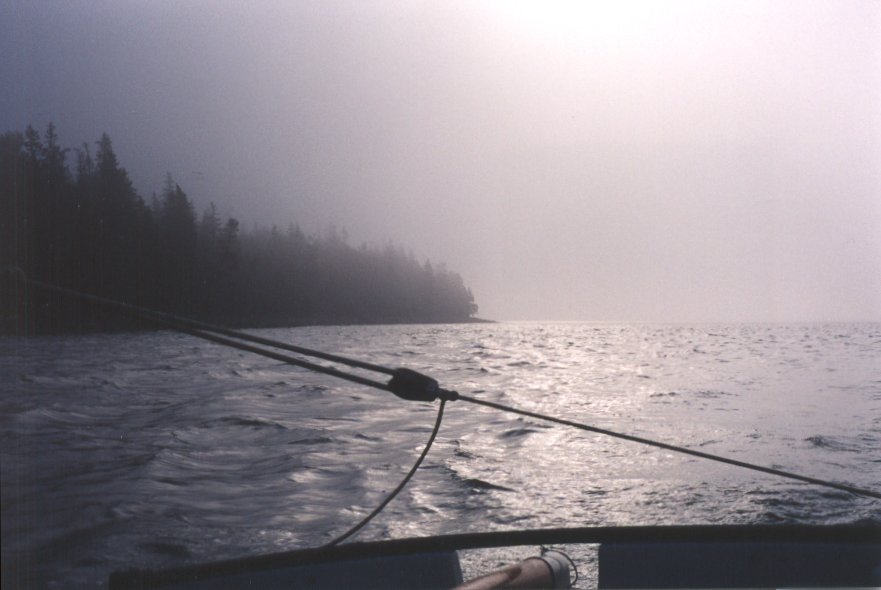 |
|
... |
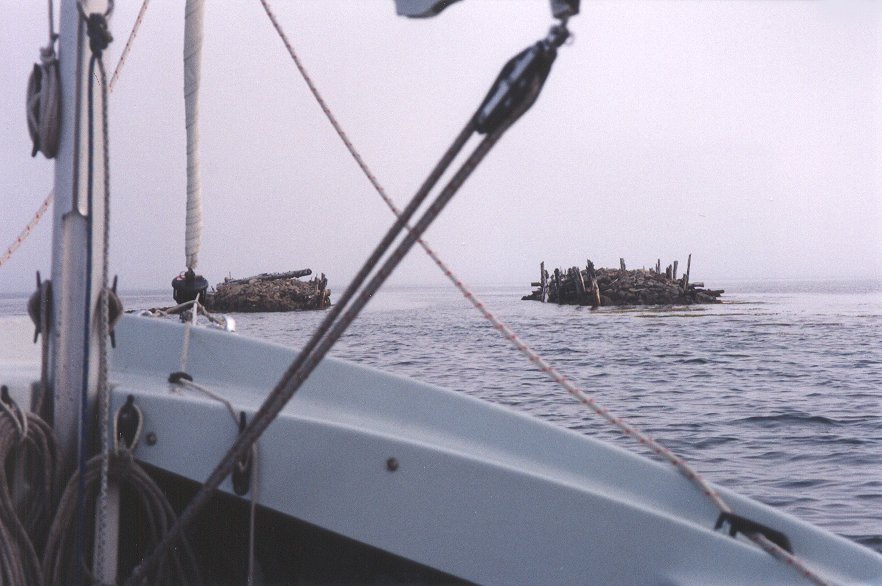 |
|
... |
| In the 19th century, Grid Passage was dredged through the
bar, and
piers of stone enclosed with baulks were constructed on both sides of
the
channel. Small vessels travelling from River Inhabitants to Lennox
Passage
used the canal to avoid open seas off Rabbit Island and Inhabitants
Bay.
After sailing among the islands, I anchored at the head of a small bay on MacNamaras Island. Since winds of 20-25 knots were forecast for today, again I decided to be windbound for the day. The spruce forest covering the island was too dense to travel in, so I walked completely around the shoreline. If it hadn’t been so windy, I would have liked to row through the narrows between this island and Rabbit Island. I saw a number of interesting crannies to poke into and barren rocks to climb over. In one place, a high, beach grass covered sandbar circled on itself, leaving a miniature harbour with a slim but deep entrance. Just the site to tuck away in a Wayfarer dinghy. The southwest coast of the island was a high cliff of eroding clay and gravel. |
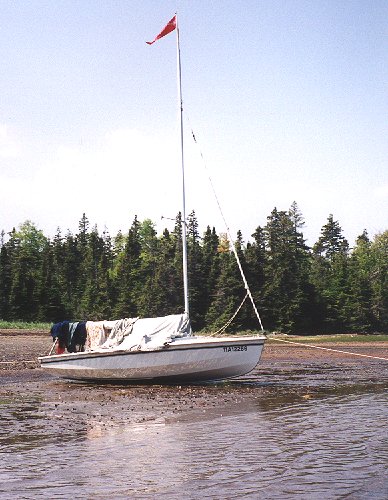 |
|
... |
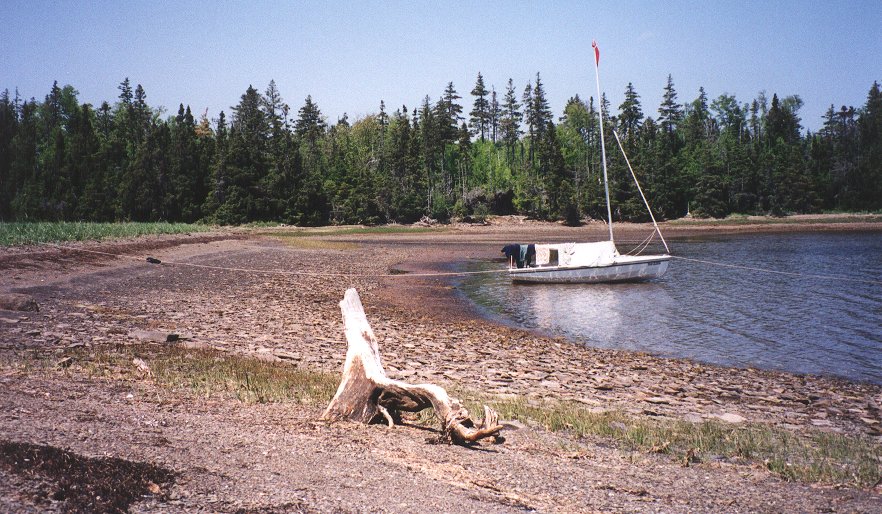 |
|
... |
| Upon returning to Naomi, I grabbed my book, water bottle, and provisions, and headed for the shade of a spruce tree While I lay there, the tide turned and gradually began to flood. Slowly the water reached Naomi’s bow and gradually surrounded her. Still she sat immobile on her keel. As usual, I had a feeling of relief when she finally gave that diminutive twist of her hull and nod of her mast which showed she was afloat again. Later I rowed into deeper water and anchored Naomi. A full moon rose and peered through the open boom tent. |